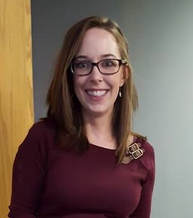1 Comment
It’s a crazy, fun, hectic, and overall special time of year as the holidays are quickly approaching. For you this might mean tons of family time, parties, big dinners, decorations, shopping, holiday music, lights, shows, etc. These all seem like exciting activities, but if you have a child with ASD it may be overwhelming for them and stress inducing for you. Children with ASD can be overstimulated by a variety of things during the holidays such as the loud music, crowds of people, bright lights, strong scents, social situations and gatherings, just to name a few. My best advice is to be prepared for these challenges! Here are a few proactive strategies you can use for yourself, family, strangers, and a child with ASD.
These are just a few ideas you can use to make your holidays run smoother. I look forward to sharing more ABA techniques with your families once the ABA Department opens up in February 2019. Until then, Happy Holidays!  AUTHOR Betsy Soshnik is a Board Certified Behavioral Analyst at Reaching New Heights. Betsy is passionate about helping children and families overcome obstacles and improve the qualtity of their lives. She has 7 years experience providing ABA services to clients ages 2-19 years old. Betsy enjoys spending time with her husband, son George and daughter Audrey.
Halloween is one of our most beloved holiday traditions, but it can be challenging for some children. Children diagnosed with Autism or Sensory issues or even language delays or speech disorders can find various aspects of Halloween to be more of a “trick” than a “treat”.
Planning ahead can help alleviate many of these challenges. Here are some simple tips for reducing stress! 1. PREPARE YOUR CHILD. Show your child pictures or videos of Halloween. Talk about what happens or read a social story or even role play the act of trick-or-treating. Anxiety is often caused by not knowing what to expect. 2. CHOOSE THE RIGHT COSTUME. Some children with sensory issues have difficulty adjusting to different textures or weight of fabric. Masks should be avoided and it’s best of every day clothing can be adapted to be a costume. Use sweats and a hoodie to make an animal costume or super hero. (I was a pink sweat suit bunny in preschool!) Let your child wear the costume before Halloween and be prepared that they may refuse on the big day. And that’s alright! 3. MAKE A PLAN. Choose to go early before it gets dark or too crowded. Choose to only go to houses near your own in case your child needs to exit quickly. Avoid houses with scary decorations or people dressed up to scare the kids. 4. THE BUDDY SYSTEM. Stay with your child, but it helps if you can pair them with a neuro-typical peer if possible. This peer can serve as a role model and may help reduce anxiety. 5. DIET RESTRICTIONS. If your child has a restricted diet, you can bring your own treats to hand to the homeowner at the moment or ahead of time. Also, discuss with your child ahead of time what and how much candy they will be allowed to eat that night. In some cases, it can help if the child carries or wears a card explaining why they don’t say “trick or treat” or “thank you”. Feel free to use mine or make your own. HAPPY HALLOWEEN!!!!!!!!!
|










 RSS Feed
RSS Feed